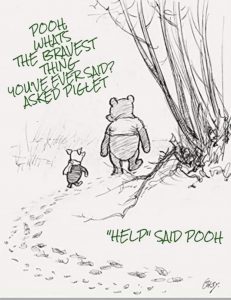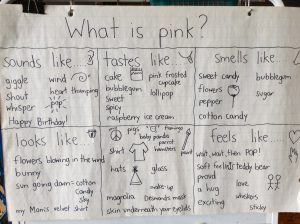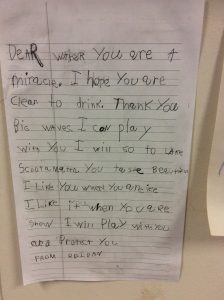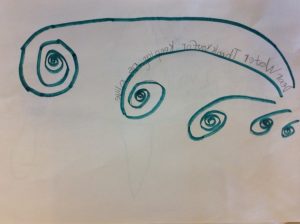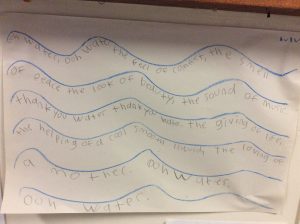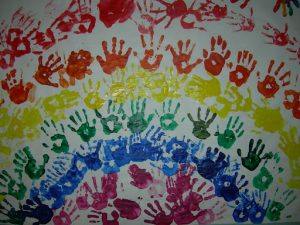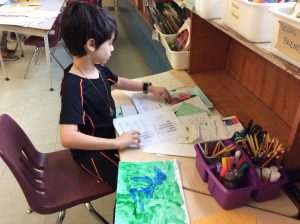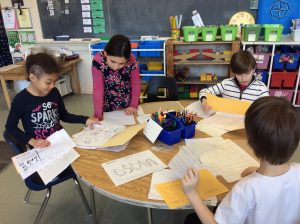Recently, there was a PD day in my board where the morning was dedicated to equity training. We started with a discussion about a book that has been provided for every school in the OCDSB titled George.
If you’re unfamiliar with the book, here is a brief synopsis from Scholastic Canada:
A bright, bold debut about a girl who was born a boy, but refuses to let that stand in the way of her dream.
More than anything else, George wants to play Charlotte in her fourth-grade class’s production of Charlotte’s Web. The problem is, her teacher won’t let her, because George is a boy. But George isn’t about to let that squash her dream. With the help of her best friend, George must learn to stand up for her wish — and brave a few bullies along the way.
Transcending all categories and genres, George is a pertinent and poignant middle-grade read for kids of all backgrounds.
As soon as this discussion was presented to us, I felt my heart rate increase. I debated turning my camera off (we were doing this PD remotely) so that my colleagues couldn’t see my reactions. We were given a few minutes to explore some questions about how we would approach this text in the classroom and share our thoughts on a collaborative whiteboard.
Reader, I didn’t make it past the first question: “What biases do we have that we may bring to the text?”
I didn’t make it past this question because I kept seeing the word FEAR come up on the screen in front of me. I started to sweat. My leg started shaking restlessly. I found it hard to sit still. I grit my teeth and started adding my thoughts next to theirs:
Why do we have to “warn” families that we are going to use this resource?
This implies that there is something controversial about being queer.
As educators, we have to make students feel seen and validated.
I’m not going to go through a detailed account of how that “training” went for me. I still haven’t fully recovered. It was an incredibly difficult day to get through and I left feeling overwhelmed by how much work there is to do in education to do better for our students. I’m going to talk about that “FEAR” idea later, after I put some of this in the context of Who I Am.
What I am going to do here is challenge the idea that discussions about 2SLGBTQ+ people, perspectives, and experiences are a challenging or uncomfortable topic in the classroom. This is going to be a two-parter, so bear with me. Maybe even a three-parter. Who knows when I’ll get to the exact point I’m trying to make.
In this first part, I’m going to talk about my experience as a student in this province.
In my Twitter bio, I describe myself as “Queer AF.” My profile picture has the pan flag as a background. I grew up in the ‘80s and ‘90s in a small town close to Ottawa and went to Catholic school from JK to OAC (grade 13, that magical year that no longer exists).
I know many people can point to the exact moment when they realized they’re queer, but I can’t. In many ways, it feels like I’ve just… always known. Because I’ve always been queer. What I needed, as a child, was the opportunity to see myself reflected in lessons, stories, media, discussions in the classroom.
That is not what I got.
There is something wrong with me.
I can’t tell you how many times that thought ran through my head as a child. As a teenager. As a student. I remember watching movies and shows, reading books, seeing families in the news, and trying to imagine myself as an adult. Sometimes, I could see myself in these families. Sometimes, I could see myself fulfilling the role that society was very clearly expecting me to take on.
Sometimes, though, I couldn’t. There would be moments where I’d imagine myself as a Wife to a Husband and it just felt… wrong. Like it didn’t fit.
I got older. People started developing crushes. We’d talk, as friends, about who we “liked.”
I never liked anyone. I never had crushes. That’s what I told myself, anyway, because everything we were taught was that girls would have crushes on boys, boys would have crushes on girls, and that was that. That’s how “biology” worked.
It wasn’t until later that I realized that oh, I had crushes, they just… were all on girls.
I sat in class thinking about this often. Why was I broken? What was wrong with me? I would try to pick out boys that maybe, one day, I could convince myself I liked. Sometimes it worked, fleetingly, but most of the time, I felt indifferent.
I moved on to high school. I wrote a love letter (yes, it was immediately shared around the school, and yes, it was mortifying) to a boy. I was deeply set in my feeling that everyone can tell that I am very broken inside and I needed someone to think that no, I’m normal, see? I have crushes on boys! I’m just a regular girl! Just like everyone else!
I think I had everyone else mostly convinced that I was straight, but I had trouble making and keeping friends all the same because the depth of that feeling of otherness was overwhelming. I struggled with mental health, self-harm, depression.
I even tried to be a Good Catholic Girl in grade 11. I became very interested in liturgies. I tried very hard to make prayer work for me. When it came time for Reconciliation, I thought, This is it. This is where I can fix everything.
I confessed to having feelings for other girls. But also, sometimes boys! I’m– I’m redeemable, right? This is my big chance! I’ll tell the truth, I’ll pray, I’ll do my penance, and then I’ll be “better.”
And at school, in a school-sanctioned (and required) event, with school staff, I was told that I would go to hell. It confirmed my fears that I was broken. Fundamentally wrong. A sinner. Don’t you want to have children? Don’t you want to go to Heaven? Don’t you want God’s love?
These questions, thrown at me like accusations by the school chaplain, are burned in my mind. The memories are like scars. I actually wrote them down. I kept the journal where I wrote that down for years, for some… awful, self-loathing reason. I don’t know why.
I was shaken by that. My mental health declined even further. I became convinced that my mental health was just another example of how irrevocably screwed up I was as a person. I mean, everyone else around me was “normal.” People were dating. In movies and shows, everyone was straight. If a character came out in the media, it was shocking. Because it wasn’t “normal.”
I withdrew into the online world even more than I had before. I threw myself into the online roleplaying community, playing make-believe as all manner of characters from different genres. I wrote stories – so, so many stories. I read fanfiction. I learned what “slash” and “shipping” meant.
Most importantly, online, I found the queer community. It was sneaky, at first – just little glimpses of other people who were like me, hidden in their writing and the characters they played. I started to wonder if I wasn’t so alone. In time, this world of beautiful, bright, loving, ABSOLUTELY NORMAL PEOPLE helped me see that it wasn’t me that was wrong, it was the world I was expected to live in that was.
And reader, that made me so angry. I had wasted so much time hating myself, trying to fix myself, trying to be someone I wasn’t. I had hurt myself, and in the process, I had hurt my family, too. I had pulled away from them because I didn’t want to cause them pain by being their broken kid.
Furious at my own ignorance to my identity, emboldened by my online friends, determined that none of this should be this way, I came out as bisexual at school in grade 12.
The reaction was swift, decimating, and brutal. People teased. People joked. In that same journal from before, I kept track of the things people said to me: I was doing this for attention. I was saying this because I was too ugly or weird to get a boyfriend. Besides, I couldn’t be bi if I’d never even kissed a girl to know if I really wanted to. What a weirdo. What a freak. Obviously I’m screwed up, since I also have all those scars on my arms. Hey, is that why I was trying to die? Because I knew how screwed up I was?
I hid. I got quiet. I did not talk about being bi after a few weeks of that misery. By OAC, I think most people had forgotten about my moment of “attention-seeking” and moved on to some other target. It wasn’t until I had moved away and started university that I let myself explore my identity and figure out some small piece of who I am.
So. You’ve read all of that, and you’re wondering what any of this has to do with education, maybe? Maybe you think that none of the responsibility for this fell on the school, because after all, it wasn’t my teachers saying that I was a freak. It wasn’t my teachers saying that I was broken or looking for attention.
The thing is, they also didn’t normalize 2SLGBTQ+ identities. They didn’t talk about them at all. And because they never brought them into the class, not only did I sit there feeling like I was fundamentally broken because I couldn’t relate to what I was seeing – my peers internalized the idea that cis-het is the norm and everything else outside of that is deviant.
In short, school created, presented, and perpetuated a perception that being cis-het is the default. If any other perspectives ever came up, they were immediately juxtaposed with the Straight Experience. If students tries to explore queer topics in their work, they were summarily shut down, implying that there was something about it that was wrong or inappropriate for school.
School let me down.
There was a chance for school to be the place where my peers were shown a wide range of experiences, perspectives, and identities to broaden their worldview.
Instead, they perpetuated one experience and held it up as the one you’re supposed to have.
And we’re still doing it, but that’s what Part 2 of this is going to be about.
If you read all of that, thanks. There’s a lot in here that I’ve never said out loud – not to my partner, not to my family, not to my friends.
But it was time.
See you in Part 2.



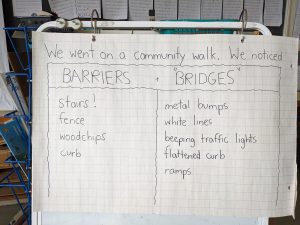
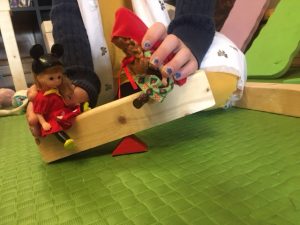


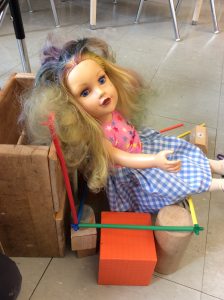
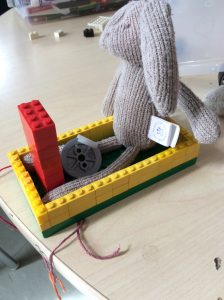
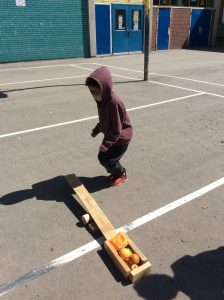
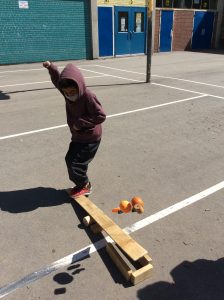
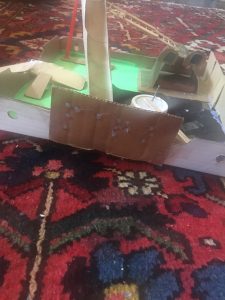
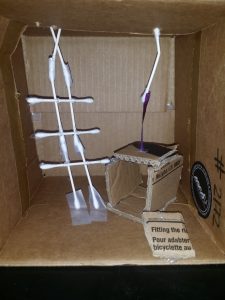
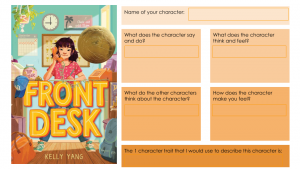
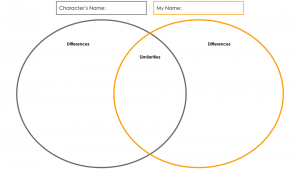 Comparing Myself to a Character
Comparing Myself to a Character
